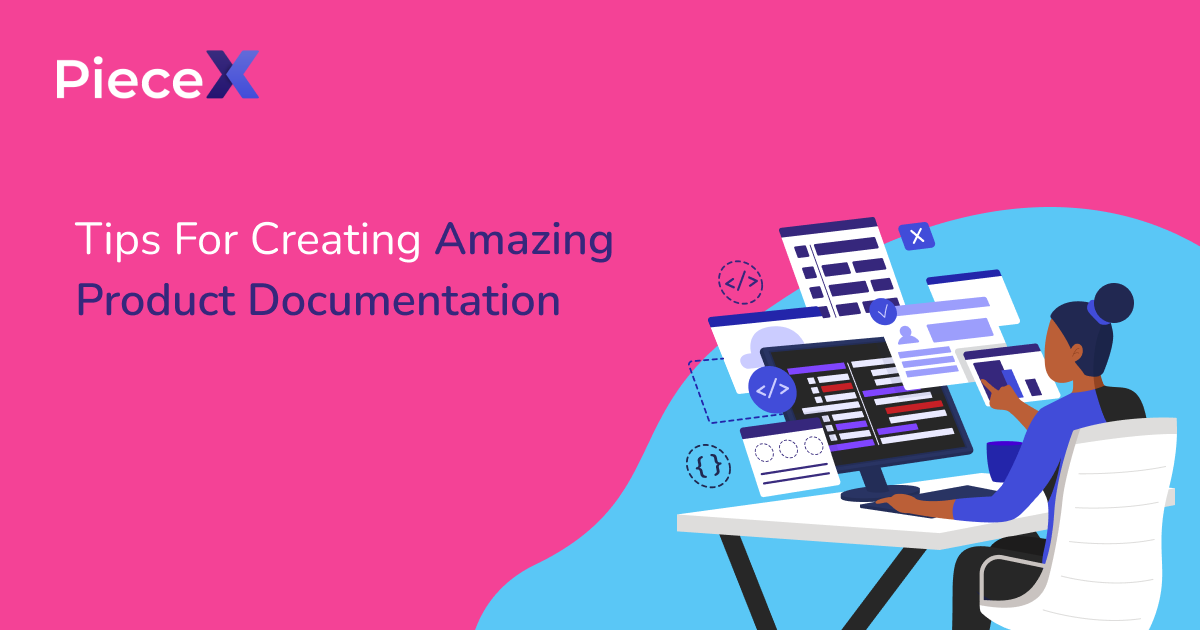
As a software developer or product manager, creating technical documentation for your product is just as important as the development itself.
Product documentation helps your users understand how to use your product, troubleshoot issues, and integrate it with other systems. Good Product documentation can be the difference between a product that is easy to use and a product that causes frustration and confusion.
In this article, we at PieceX, will discuss tips for creating amazing software product technical documentation.
What is Product Documentation
Product technical documentation is essential in software development as it helps the user to understand the product. In this article, we’ll explore tips for creating great software product technical documentation.
Explain Your Software Project
The first step in creating product technical documentation is to explain your software project. It is important to make sure that your users understand your project and how it works.
This can be achieved by providing information on the features, notes, and compatibility of your project. When creating your Product documentation, it is also essential to create technical user personas or profiles.
These personas or profiles should be based on the different types of users who will be using your product. This will help you to understand your audience and create documentation that is tailored to their needs.
Define the Purpose of Your Product Documentation
Before creating your product technical documentation, it is important to define the purpose of the documentation. This involves asking yourself questions such as, why are you creating it in the first place?
What are the different types of Product documentation and their purposes? What is the main objective of the Product documentation? Once you have answered these questions, you can create a Product documentation plan that outlines the steps you will take to achieve your goals.
Use Clear and Concise Language
Using clear and concise language is essential when creating technical documentation. Technical documentation should use simple, jargon-free language that is easy to understand.
It is also important to avoid ambiguous terms and to use active voice and concise sentences. This will help your users to understand the technical concepts without feeling overwhelmed.
Explain Adaptability of Your Project
When creating technical documentation, it is important to list the features of your product clearly and concisely. This will help your users understand the capabilities of your product. Additionally, it is important to clarify the programming languages used in your product.
This information will help your users integrate your product with other systems. Lastly, create a how-to-install guide. This guide will help users install your product and avoid common mistakes.
Use the Right Format
Different types of technical documentation require different formats. It is important to choose the right format for your audience and purpose. For example, a user manual might be best presented in a PDF format, while API documentation might be best presented in HTML format.
When choosing a format, consider the needs of your users, the type of information you are presenting, and the delivery method.
Provide Examples and Use Cases
Using real-world examples to illustrate technical concepts is a great way to make technical documentation more accessible. Providing step-by-step instructions with screenshots or diagrams can help users to understand complex processes.
Additionally, using code samples and snippets to demonstrate programming concepts can help users to integrate your product with other systems.
Keep it Up-to-Date
Keeping your technical documentation up-to-date is essential. Outdated documentation can lead to confusion and frustration for your users. Establishing a process for updating your technical documentation can help ensure that it is always accurate and relevant. Encouraging user feedback and engagement can also help you to identify areas that need improvement.
Use Version Control
Using version control in technical documentation is essential. Version control allows you to keep track of changes to your documentation and ensures that you have access to previous versions if needed. Using version control systems such as Git can also help you to collaborate with other team members and make changes to the documentation in a controlled and organized manner. Best practices for using version control in technical documentation include creating separate branches for major changes, using descriptive commit messages, and documenting changes in a change log.
Conclusion
In conclusion, creating amazing software product technical documentation is essential for ensuring that your users can understand and use your product effectively. By following these tips, you can create technical documentation that is clear, concise, and accessible. Remember to explain your software project, define the purpose of your technical documentation, use clear and concise language, explain the adaptability of your project, use the right format, provide examples and use cases, keep it up-to-date, and use version control. By incorporating these tips into your technical documentation strategy, you can help ensure the success of your software product.
